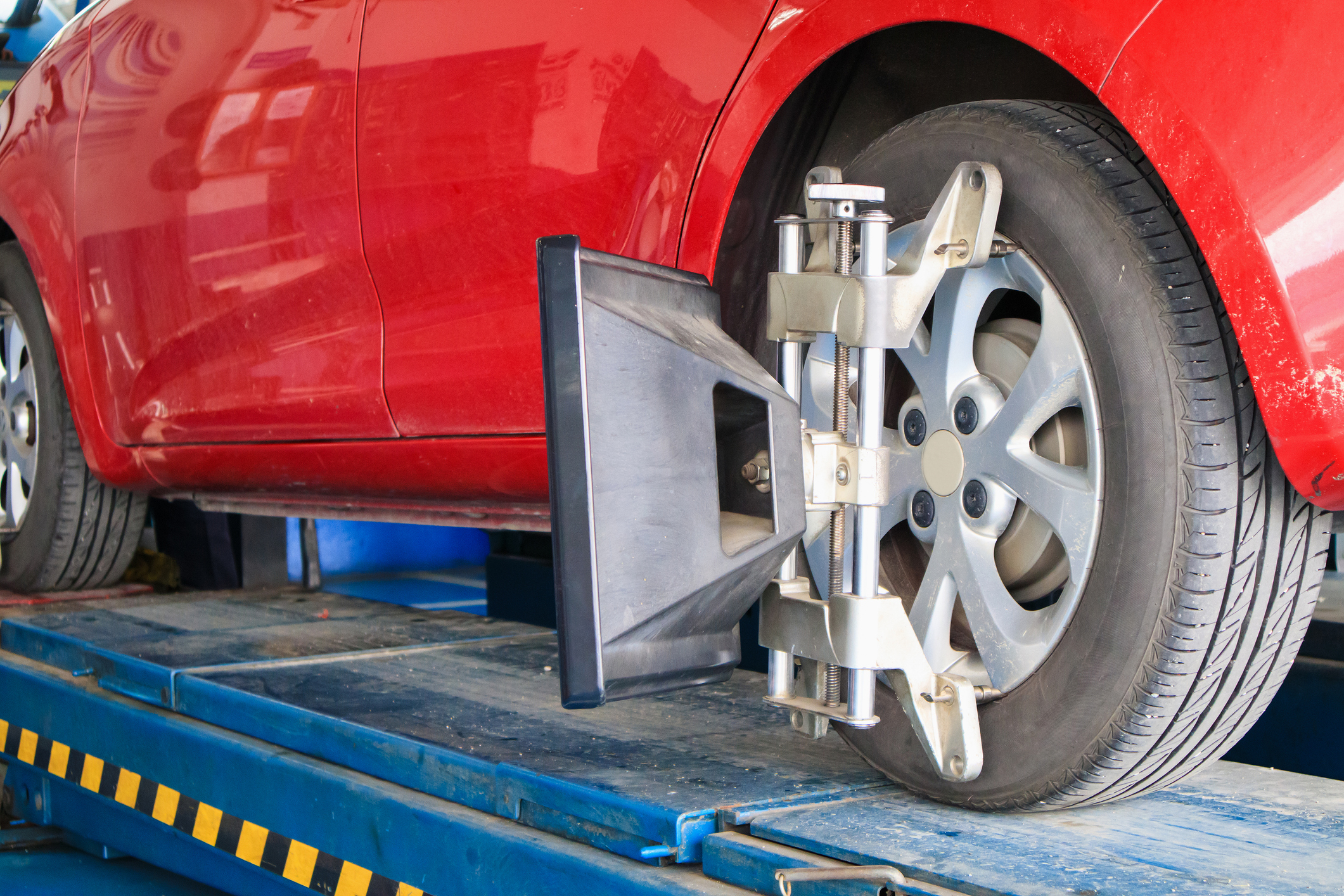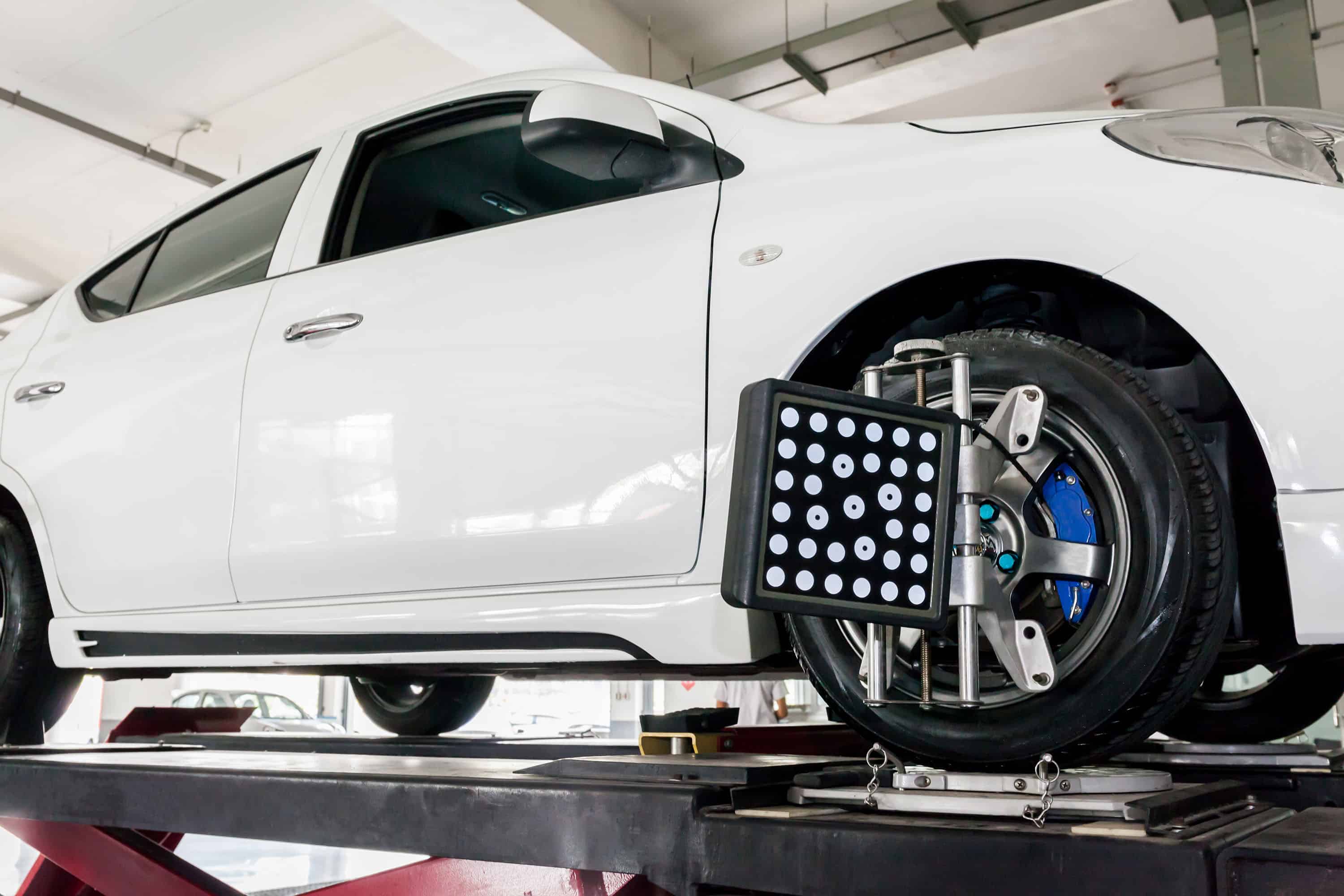What is Front End Alignment and Why is it Important?
Front end alignment, also known as wheel alignment, is the process of adjusting the angles of the wheels to ensure they are properly aligned with the vehicle’s frame and suspension. This critical maintenance task is essential for maintaining the overall health and performance of a vehicle. Neglecting front end alignment can lead to a range of problems, including uneven tire wear, reduced fuel efficiency, and compromised safety.
Uneven tire wear, for instance, can cause tires to wear down prematurely, leading to reduced traction and increased risk of accidents. Furthermore, a misaligned front end can put additional stress on the vehicle’s suspension and steering components, resulting in costly repairs down the road. By investing in regular front end alignment services, vehicle owners can help prevent these issues and ensure a smoother, safer driving experience.
But how much does a front end alignment cost? The answer to this question depends on various factors, including the type of vehicle, location, and labor rates. On average, a standard front end alignment can cost anywhere from $50 to $150, while advanced alignments can range from $100 to $250 or more. However, these costs are a small price to pay compared to the potential consequences of neglecting front end alignment.
In addition to the financial benefits, front end alignment also plays a critical role in maintaining the overall safety and performance of a vehicle. By ensuring the wheels are properly aligned, drivers can enjoy improved handling, reduced vibration, and increased fuel efficiency. Whether you’re a seasoned driver or a new car owner, understanding the importance of front end alignment is crucial for maintaining your vehicle’s health and performance.
Factors Affecting Front End Alignment Costs
The cost of a front end alignment can vary significantly depending on several factors. Understanding these factors can help vehicle owners estimate the cost of the service and make informed decisions. Here are some of the key factors that affect front end alignment costs:
Type of Vehicle: The type of vehicle is a significant factor in determining the cost of a front end alignment. Luxury vehicles, high-performance cars, and larger trucks often require specialized equipment and expertise, which can increase the cost of the service. On the other hand, standard passenger vehicles typically require less specialized equipment and labor, resulting in lower costs.
Location: The location where the front end alignment is performed can also impact the cost. Repair shops in urban areas tend to have higher labor rates compared to those in rural areas. Additionally, shops in areas with a high cost of living may charge more for their services.
Labor Rates: Labor rates vary significantly depending on the location, shop, and technician’s expertise. Shops with experienced technicians and high-end equipment may charge higher labor rates, resulting in a higher overall cost for the front end alignment.
Extent of Alignment Needed: The extent of the alignment needed can also affect the cost. If the vehicle requires a simple adjustment, the cost will be lower. However, if the vehicle needs a more complex alignment, such as a four-wheel alignment, the cost will be higher.
Additional Repairs or Replacements: In some cases, a front end alignment may reveal other issues with the vehicle’s suspension or steering system. If additional repairs or replacements are needed, the overall cost of the service will increase.
On average, the cost of a front end alignment can range from $50 to $200, depending on the factors mentioned above. However, it’s essential to note that neglecting regular front end alignments can lead to more severe problems, such as uneven tire wear, reduced fuel efficiency, and compromised safety. By understanding the factors that affect front end alignment costs, vehicle owners can make informed decisions and prioritize their vehicle’s maintenance needs.
How to Check if Your Vehicle Needs a Front End Alignment
Regular front end alignments are essential to maintain your vehicle’s safety, efficiency, and overall performance. However, many vehicle owners are unsure about how to determine if their vehicle needs a front end alignment. Here are some signs and tips to help you check if your vehicle requires a front end alignment:
Uneven Tire Wear: One of the most common signs of a front end alignment issue is uneven tire wear. If your tires are wearing down unevenly, it may be a sign that your vehicle’s alignment is off. Check your tires regularly for signs of uneven wear, such as feathering or cupping.
Vibrations While Driving: If your vehicle is vibrating while driving, it could be a sign that your front end alignment is off. Vibrations can be caused by a variety of issues, including uneven tire wear, loose or worn-out suspension components, or a misaligned front end.
Crooked Steering Wheel: A crooked steering wheel is another sign that your vehicle may need a front end alignment. If your steering wheel is not centered or is pulling to one side, it could be a sign that your vehicle’s alignment is off.
Pulling to One Side: If your vehicle is pulling to one side while driving, it could be a sign that your front end alignment is off. This can be caused by a variety of issues, including uneven tire wear, loose or worn-out suspension components, or a misaligned front end.
Recent Accidents or Curbs: If your vehicle has been involved in a recent accident or has hit a curb, it may be necessary to have a front end alignment performed. Accidents and curbs can cause damage to your vehicle’s suspension and steering components, leading to alignment issues.
Age and Mileage: As your vehicle ages and accumulates mileage, its front end alignment may become misaligned. Regular front end alignments can help maintain your vehicle’s safety and efficiency.
By checking for these signs and symptoms, you can determine if your vehicle needs a front end alignment. Remember, regular front end alignments can help maintain your vehicle’s safety, efficiency, and overall performance. If you’re unsure about how much a front end alignment cost or whether your vehicle needs one, consult with a reputable repair shop or mechanic for advice.
Types of Front End Alignments: Standard vs. Advanced
When it comes to front end alignments, there are two main types: standard and advanced. Understanding the differences between these two types can help vehicle owners make informed decisions about their vehicle’s maintenance needs.
Standard Front End Alignment: A standard front end alignment is a basic alignment service that involves adjusting the vehicle’s toe, camber, and caster to ensure proper alignment. This type of alignment is typically performed using specialized equipment and software, and is suitable for most passenger vehicles. The cost of a standard front end alignment can vary depending on the location, labor rates, and extent of the alignment needed, but on average, it can cost between $50 to $150.
Advanced Front End Alignment: An advanced front end alignment is a more comprehensive alignment service that involves adjusting the vehicle’s suspension and steering components to ensure optimal alignment. This type of alignment is typically performed using advanced equipment and software, such as 3D alignment machines, and is suitable for high-performance vehicles, luxury vehicles, and vehicles with complex suspension systems. The cost of an advanced front end alignment can be higher than a standard alignment, ranging from $150 to $300 or more, depending on the complexity of the alignment and the equipment used.
Benefits of Advanced Front End Alignment: While a standard front end alignment can provide basic alignment adjustments, an advanced front end alignment offers several benefits, including:
- Improved handling and stability
- Increased fuel efficiency
- Reduced tire wear
- Enhanced safety features
When to Choose Advanced Front End Alignment: If you own a high-performance vehicle, luxury vehicle, or a vehicle with complex suspension systems, an advanced front end alignment may be necessary to ensure optimal alignment and performance. Additionally, if you’ve recently installed new suspension or steering components, an advanced front end alignment can help ensure proper alignment and prevent premature wear.
By understanding the differences between standard and advanced front end alignments, vehicle owners can make informed decisions about their vehicle’s maintenance needs and ensure optimal performance, safety, and efficiency. When considering how much a front end alignment cost, it’s essential to factor in the type of alignment needed and the benefits it provides.
What to Expect During a Front End Alignment Service
A front end alignment service is a crucial maintenance procedure that ensures your vehicle’s wheels are properly aligned, which can improve its overall performance, safety, and fuel efficiency. Here’s a step-by-step guide on what to expect during a front end alignment service:
Inspection: The first step in a front end alignment service is a thorough inspection of your vehicle’s suspension and steering system. A trained technician will check for any signs of wear or damage on the ball joints, tie rods, and control arms. They will also check the condition of your vehicle’s tires, including the tread depth and look for any signs of uneven wear.
Adjustment: Once the inspection is complete, the technician will use specialized equipment to adjust the vehicle’s toe, camber, and caster to ensure proper alignment. This may involve loosening or tightening the suspension and steering components to achieve the correct alignment specifications.
Testing: After the adjustments have been made, the technician will test the vehicle’s alignment using a computerized wheel alignment machine. This machine will provide a detailed report of the vehicle’s alignment, including any deviations from the manufacturer’s specifications.
Verification: Once the testing is complete, the technician will verify that the vehicle’s alignment is within the manufacturer’s specifications. They will also check the vehicle’s tire pressure and make any necessary adjustments to ensure proper inflation.
Additional Repairs or Replacements: In some cases, a front end alignment service may reveal other issues with the vehicle’s suspension or steering system. If additional repairs or replacements are needed, the technician will provide a detailed estimate of the costs and explain the necessary repairs.
On average, a front end alignment service can take anywhere from 30 minutes to several hours, depending on the complexity of the alignment and the extent of any additional repairs or replacements. When considering how much a front end alignment cost, it’s essential to factor in the time and expertise required to perform the service.
By understanding what to expect during a front end alignment service, vehicle owners can be better prepared for the process and ensure that their vehicle is properly aligned for optimal performance, safety, and fuel efficiency.
Front End Alignment Costs: A Breakdown of the Average Prices
When it comes to front end alignment costs, there are several factors that can influence the price. Here’s a breakdown of the average prices for standard and advanced front end alignments, as well as any additional costs for repairs or replacements:
Standard Front End Alignment: The average cost of a standard front end alignment can range from $50 to $150, depending on the location, labor rates, and extent of the alignment needed. This type of alignment typically includes an inspection of the vehicle’s suspension and steering system, adjustment of the toe, camber, and caster, and testing of the vehicle’s alignment.
Advanced Front End Alignment: The average cost of an advanced front end alignment can range from $150 to $300 or more, depending on the complexity of the alignment and the equipment used. This type of alignment typically includes a more detailed inspection of the vehicle’s suspension and steering system, adjustment of the toe, camber, and caster, and testing of the vehicle’s alignment using advanced equipment and software.
Additional Costs for Repairs or Replacements: In some cases, a front end alignment service may reveal other issues with the vehicle’s suspension or steering system. If additional repairs or replacements are needed, the cost can vary widely depending on the type of repair or replacement needed. Some common additional costs include:
- Ball joint replacement: $100 to $300
- Tie rod replacement: $50 to $200
- Control arm replacement: $200 to $500
- Wheel bearing replacement: $100 to $300
How Much Does a Front End Alignment Cost? The total cost of a front end alignment service can vary depending on the type of alignment needed, the location, labor rates, and any additional repairs or replacements required. On average, the total cost of a front end alignment service can range from $50 to $500 or more.
By understanding the average costs of front end alignment services, vehicle owners can be better prepared for the expense and make informed decisions about their vehicle’s maintenance needs.
How to Save Money on Front End Alignment Costs
Front end alignment costs can vary depending on the type of vehicle, location, labor rates, and extent of the alignment needed. However, there are several ways to reduce the cost of front end alignment services and save money:
Schedule Regular Maintenance: Regular maintenance is key to preventing costly repairs and replacements. By scheduling regular front end alignments, vehicle owners can identify and address any issues before they become major problems.
Use Coupons or Discounts: Many repair shops offer coupons or discounts for front end alignment services. Vehicle owners can check the shop’s website, social media, or local newspapers for any available discounts.
Choose a Reputable Repair Shop: Choosing a reputable repair shop can help vehicle owners save money in the long run. A reputable shop will use high-quality parts and provide a warranty for their work, reducing the need for costly repairs or replacements.
Consider a Standard Alignment: If a vehicle only needs a standard front end alignment, vehicle owners can save money by opting for this service instead of an advanced alignment.
Look for Package Deals: Some repair shops offer package deals that include front end alignment, tire rotation, and other services. Vehicle owners can save money by taking advantage of these package deals.
Check for Manufacturer’s Recommendations: Vehicle owners should check their vehicle’s manufacturer’s recommendations for front end alignment. Some manufacturers may recommend a specific type of alignment or schedule for maintenance.
By following these tips, vehicle owners can save money on front end alignment costs and ensure their vehicle is running smoothly and efficiently. When considering how much a front end alignment cost, it’s essential to factor in the cost of regular maintenance and repairs to ensure the longevity of the vehicle.
Additionally, vehicle owners can also consider the following:
- Check for any signs of uneven tire wear, vibrations while driving, or a crooked steering wheel, which can indicate the need for a front end alignment.
- Use a tire pressure monitoring system to ensure proper tire inflation, which can help prevent uneven tire wear.
- Drive carefully and avoid potholes, curbs, and other road hazards that can cause damage to the vehicle’s suspension and steering system.
By being proactive and taking care of their vehicle, vehicle owners can save money on front end alignment costs and ensure a smoother, safer, and more enjoyable driving experience.
Conclusion: Investing in Front End Alignment for a Smoother Ride
Front end alignment is a crucial maintenance service that ensures a vehicle’s optimal performance, safety, and fuel efficiency. Neglecting this essential service can lead to uneven tire wear, reduced fuel efficiency, and compromised safety. By understanding the factors that affect front end alignment costs, such as the type of vehicle, location, and labor rates, vehicle owners can make informed decisions about their maintenance needs.
Regular front end alignment services can help prevent costly repairs down the road. By investing in this service, vehicle owners can enjoy a smoother ride, improved handling, and increased safety on the road. Additionally, front end alignment can help extend the life of a vehicle’s tires, reduce fuel consumption, and lower emissions.
When it comes to front end alignment costs, vehicle owners can expect to pay between $50 to $200 for a standard alignment, depending on the type of vehicle and location. Advanced alignments, which use specialized equipment and software, can cost upwards of $200 to $500. However, these costs are a small price to pay for the benefits of improved safety, fuel efficiency, and vehicle performance.
By prioritizing front end alignment and addressing any issues promptly, vehicle owners can avoid more costly repairs and ensure their vehicle runs smoothly and efficiently. Whether you’re looking to save money on fuel, extend the life of your tires, or simply enjoy a safer driving experience, investing in front end alignment is a wise decision. So, how much does a front end alignment cost? The answer is, it’s a small price to pay for the numerous benefits it provides.
In conclusion, front end alignment is a vital maintenance service that offers numerous benefits for vehicle owners. By understanding the factors that affect front end alignment costs and prioritizing this service, vehicle owners can enjoy a smoother ride, improved safety, and increased fuel efficiency. Don’t neglect your vehicle’s front end alignment – invest in this essential service today and reap the rewards of a well-maintained vehicle.




